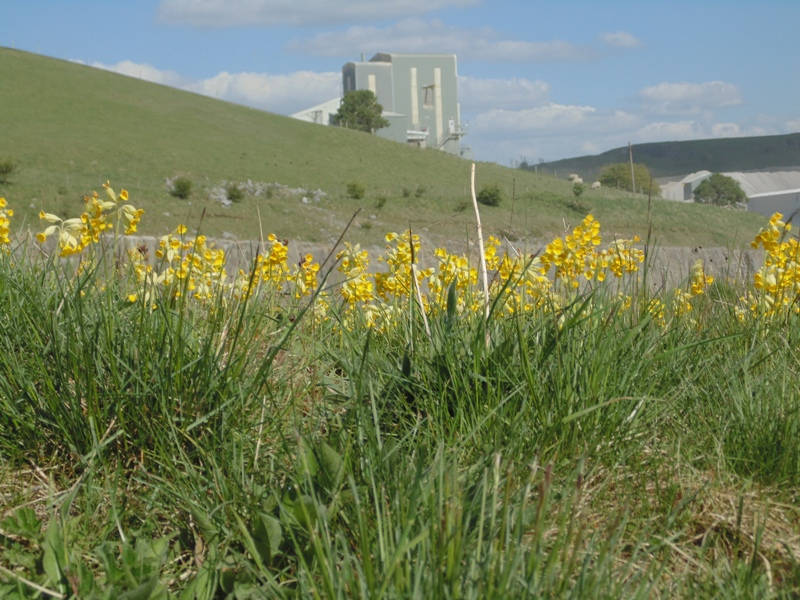When it comes to biodiversity and ecology the team at Dove Holes quarry are most known for their work protecting the future of the Twite bird population (more will be happening on that front this summer!) However, they have been working to retain and improve the outcome for all wildlife at the quarry.
Many quarry sites within CEMEX have Biodiversity Action Plans (BAPs for short.) These plans take a holistic look at wildlife within the quarry and incorporate habitat and wildlife aspirations for the site, feeding into the active restoration of the quarry. Each site is reviewed annually against the actions proposed in these plans, to gauge progress. These results are reported on and feed into CEMEX Europe.
The team at Dove Holes is doing really well against their actions; monitoring and supplementary feeding Twites, enhancing grassland by improving management. They currently manage the grassland with cattle to help the wildflowers flourish.
Limestone and Chalk Grasslands have more flowers than any other type of grassland but have declined by 94% in recent years. These grasslands in turn support specialist butterflies like Marbled Whites and numerous other invertebrates. Other actions include bird and bat boxes in the woodland fringes, with Barn Owl boxes next on the list.
However, the most spectacular result last summer was the success of the annual flower mix that was sown on limestone rubble at the back of the car park! Yep that’s right, sown on rubble. Wildflowers like low nutrients and can grow in the most seemingly inhospitable places. This vivid show of colour is not just great for feeding our eyes and soul, but is a fantastic nectar source for bees, butterflies, hoverflies – invertebrates; plus, it shows that a quarry team cares about its environment.
Team Dove Holes have raised the bar and thrown down the gauntlet to other CEMEX chalk and limestone quarries that have the base rock ingredients to create fantastic habitats that are rare and declining. Their positive impact is helping CEMEX buck that trend.
